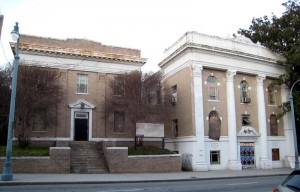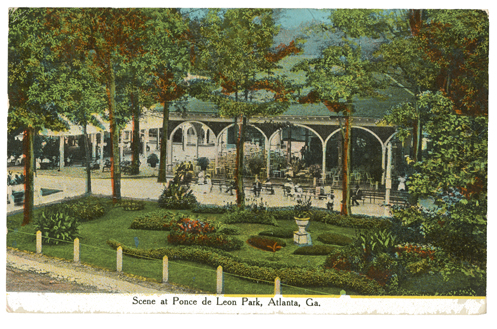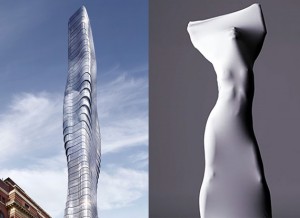In this post, I will give an exterior built environment description on Historic Fourth Ward Park. All photos were taken from my cellphone.
Historic Fourth Ward Park (H4WP) is a multi-use outdoor green space that is accessible by people of all ages.
Location
The space is located north on Ralph McGill Boulevard and south of North Avenue. The best way to enter the park via street is from North Ave. Since the park is directly behind Ponce City Market, visitors can use its flag tower or orange logotype as a marker. There is also a short trail that connects to park to the Eastside Beltline.
North Avenue entrance, facing Ponce City Market.
A lawn sign that promotes supporting the Park.
Unlike other city parks in Atlanta, H4WP lacks proper signage at the two most popular entrances. Guests who stroll the park wouldn’t know the name until seeing this lawn sign.
Parking is available to visitors, but it is very limited. The developers may have done this to encourage walking , cycling, or utilizing to the park. If it is necessary to drive, be mindful that cars are bound to a narrow street with parallel parking.
Features
Lake at Historic Fourth Ward Park
The central characteristic of the park is the man-made lake. A winding trail encompasses the water and provides a closer view of the native plants, ducks, and two waterfalls. This loop can be accessed by a single ramp and a series of staircases.
Other features include an open recreational field, an amphitheater, and a playground with a splash pad. This versatility suggests a wide range possible use that may include: exercise groups, concerts (formal and informal), festivals, field trips, or simply, a day in the park. It would be best to use these features in warmer weather, but the park is open all year long.
Layout
This portion of the park was adopted by Mandarin Oriental, Atlanta.
Historic Fourth Ward Park is built in two warped, concentric circles that allows individuals to take a stroll, exercise, or simply sit in a serene environment. Unique design features also add to the visual aesthetic of the park. Aside from beauty, these stone features were placed to guide rain water to the lake to prevent flooding.
After viewing H4WP on Google Maps, I realized it extends beyond what I viewed in person. The park appears to be split a multiple sections. Despite limited parking, the additional tracts of grass can accommodate a large number of people for a one day event. All areas of the park can be accessed via winding concrete sidewalks.



